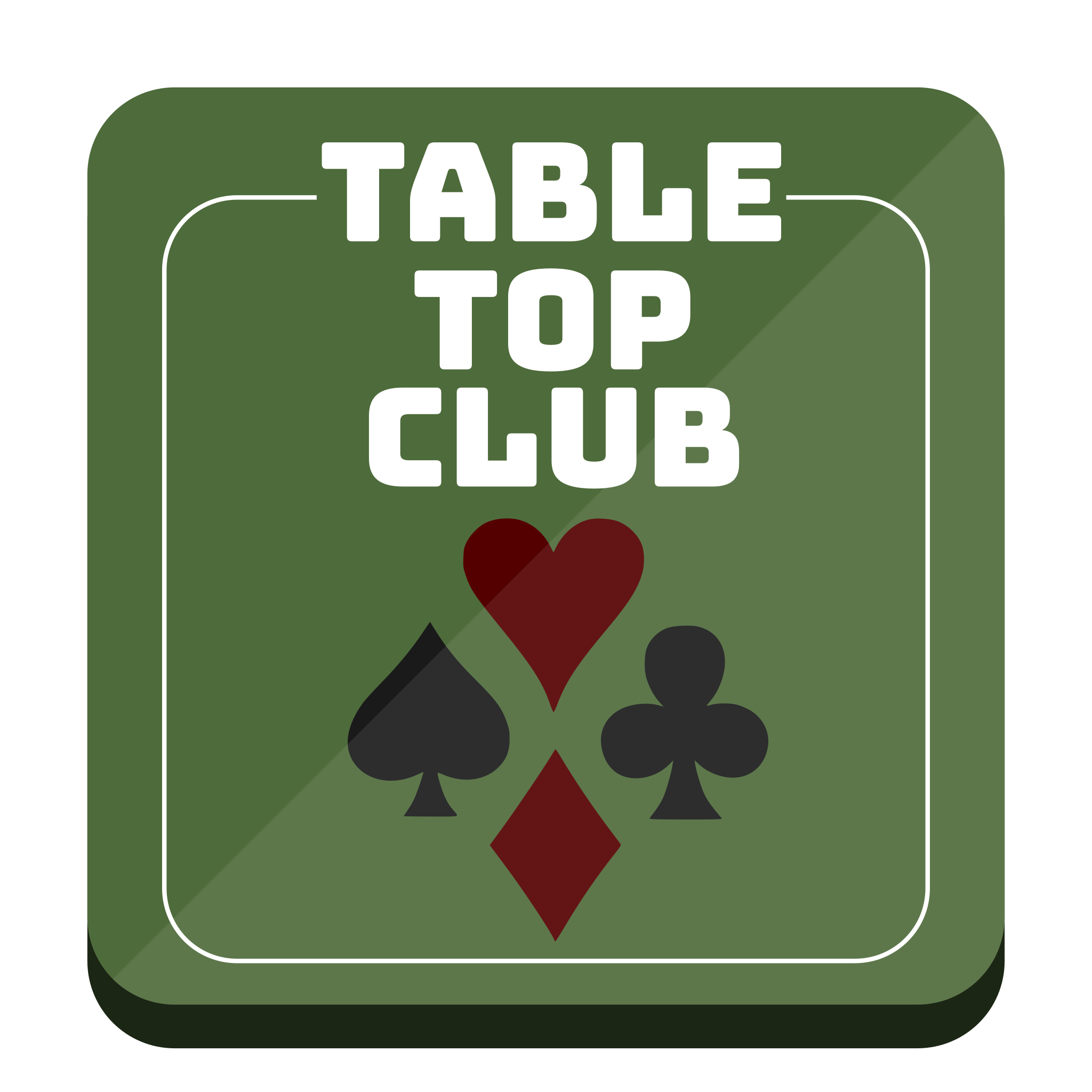Adding images as cards and tokens
Contents
Adding images as cards and tokens#
This tutorial will teach you how to add images to an asset pack to make cards and tokens, which are in-game objects that can stack on top of each other. If you wish to add another kind of object to the game, see Adding 3D models as objects.
Cards or tokens?#
Cards and tokens, while both are able to stack, differ slightly in extra functionality. If you’re not sure which type of object you want to create, see Card and Token.
Preparing the image#
Before we add the image to the asset pack, we will first need to make sure it is set up properly so it will appear correctly in-game.
Preparing card images#
Luckily, there is not much to do to set up card images, since the image will be shown as-is in-game! The only requirement is that each card will need it’s own image (this includes the back face of the cards).
Preparing token images#
For tokens, since the image will be mapped to a 3D shape (either a cube, or a cylinder), you’ll need to modify the image to fit what is called a “UV mapping”. This means your final image needs to look like this:
Cube:
Cylinder:
Note
The resolution of the final image does not matter, only the proportions do. See Image for more information.
Adding the images to the asset pack#
With the images set up, we can now add them to the asset pack! If you do not already have one, see Creating your own asset pack.
In your asset pack, create a folder named either cards or tokens. If you
are adding tokens, you’ll need to create a sub-folder named either cube or
cylinder depending on what shape the token will be. Once the folders are
created, it’s just a matter of copying the images to their respective folders,
like so:
MyAssetPack
├── cards
│ ├── Back.png
│ ├── Card1.png
│ └── Card2.png
└── tokens
├── cube
│ └── CubeToken.jpg
└── cylinder
├── CylinderToken1.png
└── CylinderToken2.png
Configuring the object size#
At this point, you can launch the game and see that there are now objects in-game with your images on them, except they they are probably the wrong size. This is because without telling the game otherwise, it will assume the object is 1cm x 1cm x 1cm.
We can tell the game what size the object should actually be by creating a config.cfg file next to our images in the asset folder. Create a file with this name in your file manager, then open it with a text editor of your choice! Here are a few examples of how to set the size of your objects:
; MyAssetPack/tokens/cylinder/config.cfg
; You can set the size of each object individually:
[CylinderToken1.png]
; Object is 5.0cm wide, 2.5cm tall, 3.0cm deep.
scale = Vector3(5.0, 2.5, 3.0)
[CylinderToken2.png]
scale = Vector3(10.0, 15.0, 10.0)
; MyAssetPack/cards/config.cfg
; You can also set the size of all objects in one go using a wildcard:
[*]
scale = Vector2(6.0, 8.0)
Note
Cards are always the same thickness, so the scale for cards is always a
Vector2 containing two numbers, rather than a Vector3.
Warning
If you are on Windows, you may need to ensure that the file extension is
actually .cfg, rather than .txt, since Windows hides file extensions
by default.
Windows 10: In File Explorer, click on View, and then tick the File name extensions checkbox.
Windows 11: In File Explorer, click on View, then click on the Show dropdown, and then make sure the File name extensions checkbox is ticked.
Configuring card backs#
Using the config.cfg file, you can also tell the game what image to use
for the back face of cards. Using Back.png as an example:
; MyAssetPack/cards/config.cfg
; Using the scale from before...
[*]
scale = Vector2(6.0, 8.0)
; This line adds the back face for all cards, including Back.png!
back_face = "Back.png"
; We can also tell the game to not import Back.png as it's own card:
[Back.png]
ignore = true
See more#
Congratulations, you now have your own cards and tokens in the game!
If you want to further configure your objects, see Card, Token, and config.cfg.
If you want to add pre-made stacks of cards and tokens to your asset pack, see stacks.cfg.
